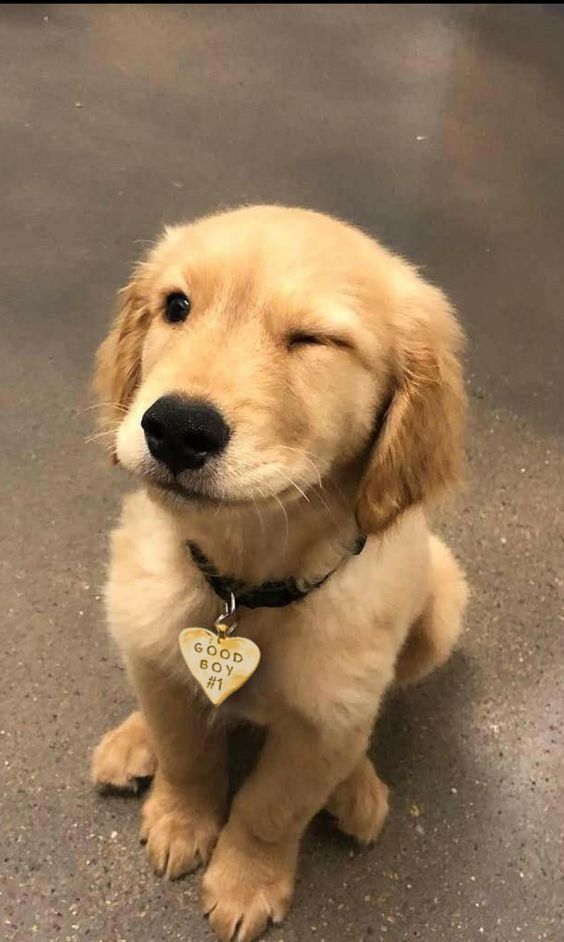Dog / Detail
Understanding Canine Teeth: A Guide to Friendly Displays
Jonathan Bennet | 23 September 2024 | 12:05
Dogs are often referred to as "man's best friend," and for good reason. Their loyalty, companionship, and playful nature make them a beloved part of many families. However, even the most affectionate canine can exhibit behaviors that might seem puzzling or even concerning.
One such behavior is the display of teeth, particularly when interacting with other family members.
Let's explores the reasons behind this canine phenomenon and offers insights into how to interpret and address it.

The Natural Canine Smile
Before delving into the potential reasons for teeth-showing behavior, it's important to understand that dogs often display their teeth as a sign of happiness or excitement. This is akin to a human smile, where the teeth are revealed as a natural expression of joy or amusement.
When dogs play with each other or their human companions, they may playfully nip, wrestle, or engage in other rough-and-tumble activities. During these interactions, the teeth might become visible, but this is usually a harmless and playful display.

Potential Reasons for Teeth-Showing Behavior
While the natural canine smile is a common occurrence, there are several other factors that might contribute to a dog's tendency to show their teeth when interacting with family members:
- Playful Excitement: As mentioned earlier, dogs often display their teeth when they are feeling excited or playful. If a dog is particularly enthusiastic about a game or activity, they may inadvertently reveal their teeth as a result of their heightened energy.
- Social Grooming: Dogs engage in social grooming as a way to bond with each other and reinforce their social hierarchy. This behavior involves licking, biting, and grooming each other's fur. While these actions might seem aggressive, they are actually a sign of affection and trust. In some cases, the display of teeth during social grooming might be a way for dogs to communicate their intentions or boundaries.
- Defensive Behavior: In rare instances, a dog might show their teeth as a defensive response to perceived threats or discomfort. This could happen if a dog feels overwhelmed, anxious, or is experiencing pain. If a dog consistently displays their teeth in a defensive manner, it's important to consult with a veterinarian or a qualified animal behaviorist to address the underlying issue.
- Misinterpretation of Signals: Dogs are highly social creatures that rely on body language and vocalizations to communicate with each other and with humans. Sometimes, a dog might misinterpret a human's actions or signals, leading to a defensive or anxious response. For example, if a human approaches a dog too quickly or makes sudden movements, the dog might perceive this as a threat and display their teeth.

Addressing Teeth-Showing Behavior
If you're concerned about your dog's tendency to show their teeth, here are some tips to help you address the issue:
- Consult with a Veterinarian: If you notice a sudden change in your dog's behavior, including frequent teeth-showing, it's essential to consult with a veterinarian to rule out any underlying health issues.
- Provide Positive Reinforcement: Reward your dog for good behavior, such as playing gently and interacting calmly with family members. This positive reinforcement can help to strengthen desired behaviors and reduce unwanted ones.
- Socialize Your Dog Early: Exposing your dog to a variety of people, animals, and environments at a young age can help them develop good social skills and reduce anxiety.
- Manage Stress and Anxiety: If you suspect that your dog's teeth-showing behavior is related to stress or anxiety, consider techniques such as training, exercise, and environmental enrichment to help them cope.
- Seek Professional Help: If you're struggling to manage your dog's teeth-showing behavior on your own, consulting with a qualified animal behaviorist can provide valuable guidance and support.

While the display of teeth can sometimes be a cause for concern, it's important to remember that it's often a natural and harmless canine behavior. By understanding the potential reasons behind this phenomenon and taking appropriate steps to address any underlying issues, you can foster a harmonious and loving relationship with your furry companion.
Related
-

The Healing Power of Dogs: How Canine Therapy is Revolutionizing Mental Health and Boosting Positive Energy in Humans
Dog14 November 2024
-

A Pawsitive History: Dogs of Nuremberg
Dog09 November 2024
-

The Role of Oxytocin in the Human-Dog Bond: The Science Behind Our Deep Connection
Dog06 November 2024
-

Beyond the Beach: Jamaica's Dog Lovers
Dog29 October 2024
-

A Dog's Delights: Homemade Snacks for Our Furry Babies, Recipes Included!
Dog29 October 2024
-

A Dog's Disorientation: Understanding Your Dogs' Wanderlust
Dog29 October 2024
Popular
-

-

A Pawsitive History: Dogs of Nuremberg
09 November 2024 -

-

Beyond the Beach: Jamaica's Dog Lovers
29 October 2024 -
